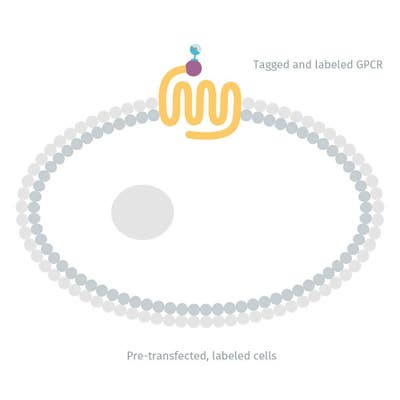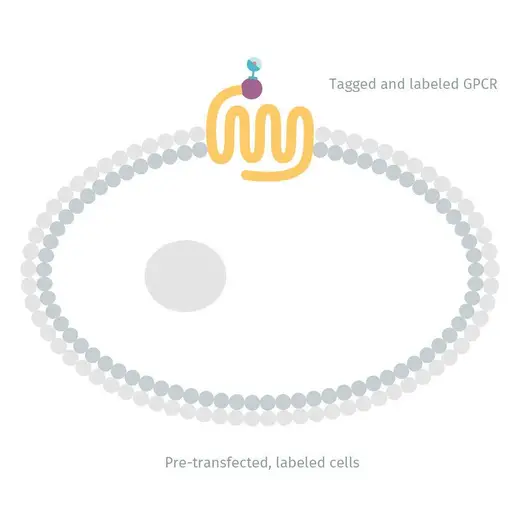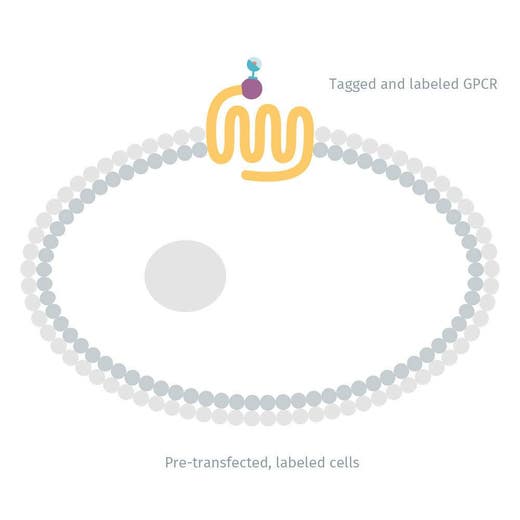

Tag-lite Glucagon GLP1 receptor Frozen & Labeled Cells, 200 Assay Points


Tag-lite Glucagon GLP1 receptor Frozen & Labeled Cells, 200 Assay Points






Tag-lite cells transiently expressing the Glucagon GLP1 receptor labeled with Terbium for use in receptor binding applications. The cells are provided ready to use.
For research use only. Not for use in diagnostic procedures.
| Feature | Specification |
|---|---|
| Application | Receptor-Ligand Binding |
Tag-lite cells transiently expressing the Glucagon GLP1 receptor labeled with Terbium for use in receptor binding applications. The cells are provided ready to use.
For research use only. Not for use in diagnostic procedures.



Tag-lite Glucagon GLP1 receptor Frozen & Labeled Cells, 200 Assay Points



Tag-lite Glucagon GLP1 receptor Frozen & Labeled Cells, 200 Assay Points



Product information
Overview
The GLP1 receptor is a GPCR which role is to potentiate the glucose-induced secretion of insulin from pancreatic beta cells, increase insulin expression, inhibit beta-cell apoptosis, promote beta-cell neogenesis.
Cells expressing the GLP1 receptor are provided pre-labeled with Terbium, and can be used to conduct receptor binding studies on the aforementioned receptor.
Specifications
| Application |
Receptor-Ligand Binding
|
|---|---|
| Brand |
Tag-lite
|
| Detection Modality |
HTRF
|
| Product Group |
Cells
|
| Shipping Conditions |
Shipped in Dry Ice
|
| Target Class |
GPCR
|
| Technology |
TR-FRET
|
| Therapeutic Area |
Cardiovascular
Infectious Diseases
Metabolism/Diabetes
NASH/Fibrosis
Neuroscience
Oncology & Inflammation
Rare Diseases
|
| Unit Size |
200 Assay Points
|
Video gallery

Tag-lite Glucagon GLP1 receptor Frozen & Labeled Cells, 200 Assay Points

Tag-lite Glucagon GLP1 receptor Frozen & Labeled Cells, 200 Assay Points

How it works
Assay principle
Running your GLP1 receptor binding assay using Tag-lite is as easy as it can gets. Simply dispense 10 µL of labeled cells into each well, followed by 5 µL of labeled ligand and 5 µL of the compound you wish to test. Like all HTRF assays, Tag-lite assays do not require any washing steps. A diagram of the procedure to be followed is given on the right.

Saturation binding (KD)
A saturation binding assay measures total and non-specific binding for increasing concentrations of ligand under equilibrium conditions. To perform the assay, the fluorescent ligand is titrated into a solution containing a fixed amount of labeled cells and then incubated to equilibrium. The HTRF ratio obtained from this titration is the total binding.


Competitive binding (KI)
A competitive binding assay is performed to measure the dissociation constant, Ki. To perform the assay, the compound is titrated into a solution containing a fixed concentration of fluorescent ligand and a fixed amount of cells.


Assay validation
Kd and Ki validation
Examples of data obtained using Glucagon GLP1 labeled cells and their matching fluorescent ligand (L0030RED). Exendin 4 was used as reference ligand. Results may vary from one HTRF® compatible reader to another.


Resources
Are you looking for resources, click on the resource type to explore further.
G-protein coupled receptors (GPCRs) are crucial transmembrane proteins involved in cellular signal transduction.
This technical...
This guide provides you an overview of HTRF applications in several therapeutic areas.
Tag-lite™ is a cell-based, no-wash alternative to traditional radioisotope assays for studying GPCR-ligand interaction.
Adenosine...


How can we help you?
We are here to answer your questions.






























